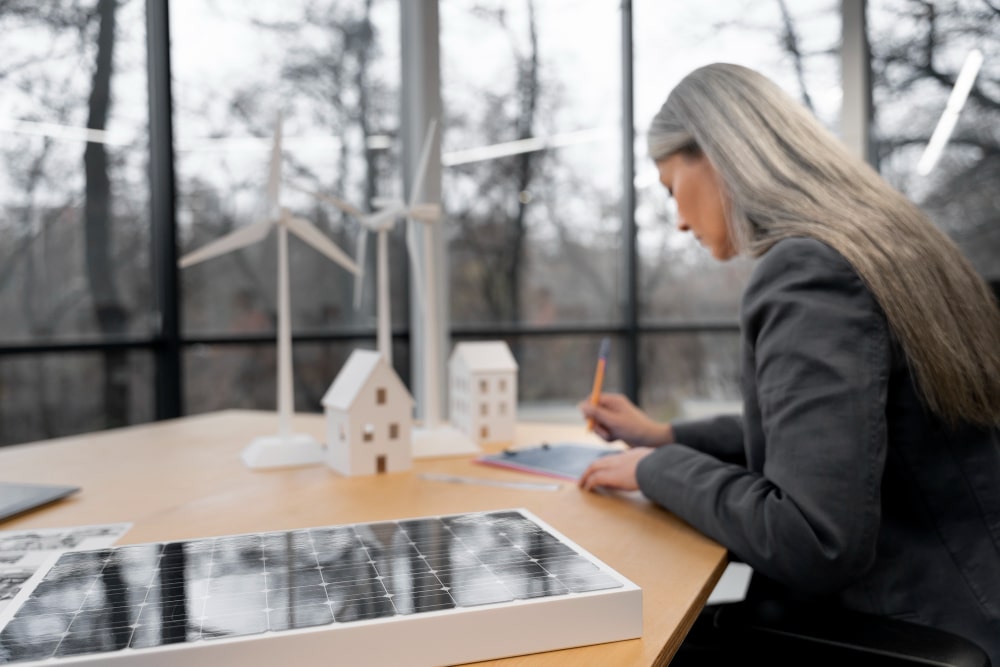According to the World Health Organization (WHO), climate change could potentially increase the number of deaths from air pollution by hundreds of thousands of people between 2030 and 2050. The global problem of air pollution is spreading to most countries in the world.
Studies consistently estimate that 95 percent of the world’s population breathes dirty and harmful air. Air pollution also causes a decline in human intelligence and an increased risk of global diabetes. To combat this global risk, cities around the world are stepping forward with smart city technologies and initiatives to reduce air pollution.
Electrostatic Precipitators with Nanotechnology
For removing particulate matter from industrial pollutants, electrostatic precipitators have been in use for a while. However, current developments in nanotechnology are increasing the effectiveness of these devices. Electrostatic precipitators can more efficiently capture tiny particles and pollutants by coating the collection plates with nanomaterials, such as carbon nanotubes. The reduction of tiny particulate matter (PM2.5), a primary cause of respiratory issues and early mortality, is where this technology shows the most promise.
Smart Air Quality Monitoring Systems
Real-time air quality monitoring is essential for understanding pollution sources and trends. Advances in sensor technology and data analytics are enabling the development of smart air quality monitoring systems. These systems provide accurate, high-resolution data that can help authorities take immediate action to reduce pollution in specific areas. Citizens can also access this information, enabling them to make informed decisions about outdoor activities and routes to avoid high pollution areas.
Photocatalytic Coatings
Street-level air pollution is being fought with photocatalytic coatings. These coatings use sunlight to start chemical reactions that break down pollutants including nitrogen oxides (NOx) and volatile organic compounds (VOCs), which are frequently applied to building surfaces and road materials. Photocatalytic coatings have the potential to improve air quality in densely populated regions by transforming urban surfaces into pollution-fighting agents.
Electrochemical Conversion of CO2
One of the main greenhouse gases causing global warming is carbon dioxide (CO2). For the purpose of capturing CO2 from industrial emissions and transforming it into valuable products, novel electrochemical techniques are being developed. For instance, CO2 can be used to make carbon-based fuels, chemicals, or building materials, minimizing its negative effects on the environment while also producing useful resources.
Biofiltration and Bioremediation
In the struggle against air pollution, natural alternatives are gaining popularity. Utilizing plants and microorganisms, biofiltration systems purge the air of contaminants. Utilizing living things to break down and neutralize toxic contaminants is known as bioremediation. Particularly in urban settings, these green solutions provide an affordable and sustainable way to improve air quality.
Advanced Air Purification Technologies
Direct pollution removal from both indoor and outdoor air is now achievable because to advancements in air purification technology. High-efficiency particulate air (HEPA) filters, plasma ionization, and electrostatic air purifiers are a few of these developments. By lowering the health hazards connected to indoor pollution sources, these devices can help improve the quality of the air within buildings.
Electric Vehicles and Sustainable Transportation
Because internal combustion engines emit nitrogen oxides and particulate matter, the transportation industry is a significant source of air pollution. Renewable energy-powered electric cars (EVs) are gaining popularity as a sustainable option. Adoption of electric vehicles can drastically reduce air pollution in urban areas as EV technology develops and charging infrastructure grows.
Bottom Line
Future generations will be greener and healthier thanks to innovative technologies that reduce air pollution. These advances, which range from sophisticated air quality monitoring systems and biofiltration techniques inspired by nature to nanotechnology-enhanced electrostatic precipitators, give hope for resolving the worldwide air pollution challenge. Furthermore, the development of electric cars and sustainable transportation solutions shows that cleaner, more environmentally friendly options are attainable. It is critical to invest in and apply these cutting-edge technologies, working together to provide clean air into our cities and ecosystems, in order to effectively address air pollution.
